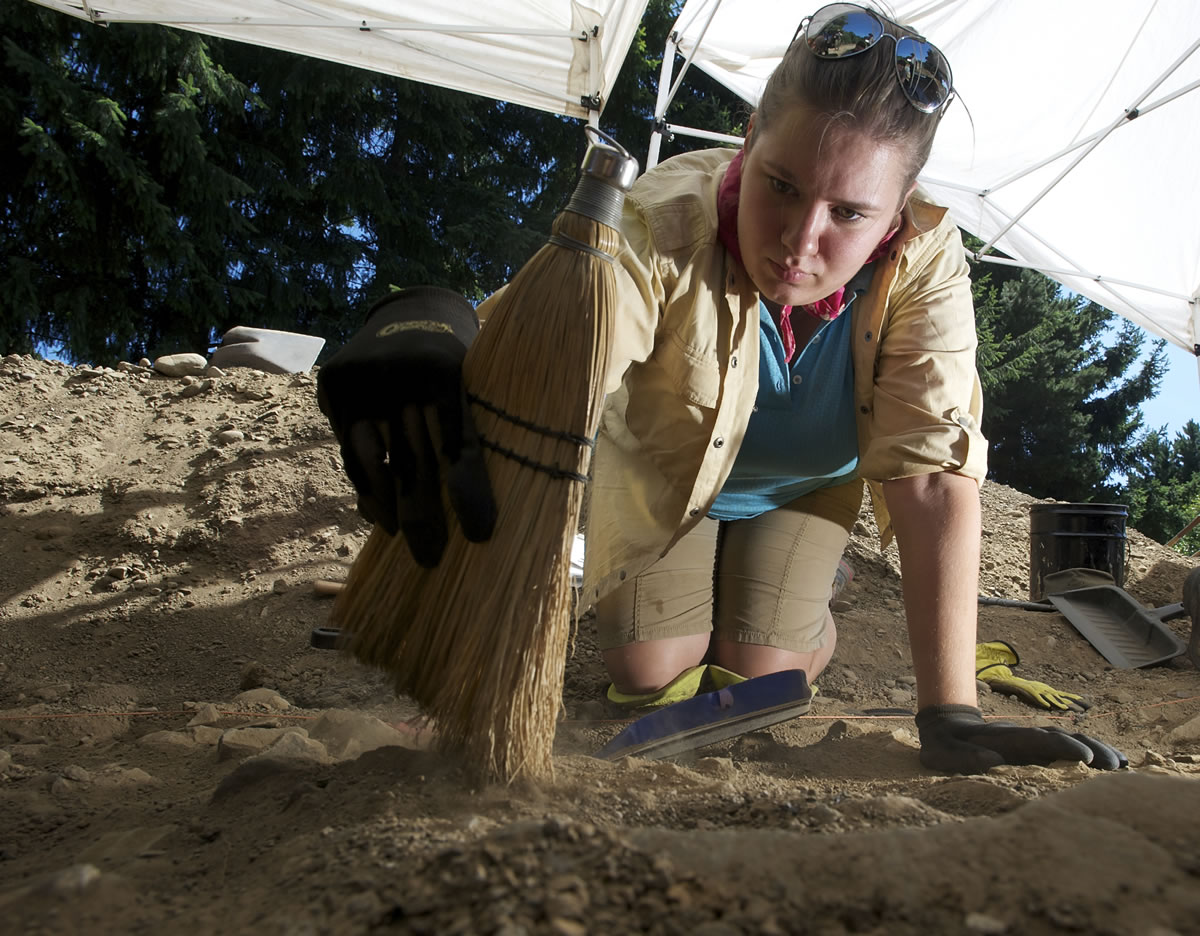If you go
What: Fort Vancouver public archaeology field school
Where: Just off the Land Bridge trail, near the replica workers’ cabins.
When: Tuesdays through Saturdays, through Aug. 3.
When Desiree Lukens stepped into the shallow trench, she didn’t just go down a couple of feet; she stepped back a couple of centuries.
Lukens is part of this year’s field school at Fort Vancouver, which gives college students hands-on experience at an archaeological dig.
“It’s amazing, to take all we’ve done in the classroom and find something in the ground,” she said. “It’s wonderful to touch the past.”
Last week, the Portland State University student was working in what recently had been a paved military parking lot. It was acquired in 2012 by the Fort Vancouver National Historic Site after the U.S. Army ended its 162-year tenure at Vancouver Barracks.
During the previous transition, when the Army took possession, American soldiers evicted William Kaulehelehe, a Hawaiian preacher who worked for the Hudson’s Bay Company.
Lukens and other students have been carefully exploring the remnants of what most likely was Kaulehelehe’s home.
The work started with a trench, 1 meter wide and 5 meters long, said Doug Wilson, Fort Vancouver National Historic Site archaeologist.
“We’re looking for the foundations of the house,” Wilson said. “We found a two-tined fork and some animal bone; probably a deer bone.”
The students have been unearthing other bits while practicing the techniques of excavating, mapping and cataloging their finds.
“Hand-wrought nails; beads; some glass; ceramics,” Lukens said.
The random finds might be unconnected, but they do come together to illustrate a larger point, Lukens said: “Someone was here.”
And that’s what she finds so intriguing about the project.
“This is how people lived,” Lukens said. “This was their life.”
Historians already know something about some former inhabitants of the site, once known as Kanaka Village, west of the reconstructed fort.
The Hudson’s Bay Company brought Kaulehelehe to Fort Vancouver to serve as a pastor for the Hawaiian workforce. They even let Mrs. Kaulehelehe make the trip.
“He had the only Hawaiian wife at the fort,” Wilson said.
Tube beads
Another village inhabitant with a biography was “Little Proulx” (pronounced “Prew”), a French-Canadian who lived here in the 1840s.
“He was a ‘mid-man.’ They were paid by where they were in a canoe,” Wilson said. “The guy in the back was paid the most, and the guy at the bow was paid second-most. The ones in the middle earned the least.”
Proulx’s home yielded a nice find a few days ago when the students came across a cache of about 70 tiny glass beads.
They’re hot tumbled tube beads, Wilson said, imported from Europe — maybe from Venice — in the early 1800s.
“A glass blower would blow a bubble, and two guys would pull it in opposite directions, stretching the bubble into a thin glass tube,” Wilson said. “It was cut into beads.”
Other common finds in the village area are fragments of clay pipe stems.
“Think of pipe stems as the cigarette butts of the past,” said Katie Wynia, a Washington State University Vancouver instructor at the field school.
In that era, Wynia said, “Everybody smoked tobacco.”
Wynia came across some Hudson’s Bay Company records that quantified one aspect of their smoking habit.
“The records at one fort showed it had 16,000 pipes in stock,” she said.
The field school also is doing some work at the site of the World War I spruce mill, between the replica fort stockade and Pearson Air Museum. Preliminary work included an above-ground survey with a magnetic gradiometer, which can read changes in the soil and reveal what was be beneath the surface.




